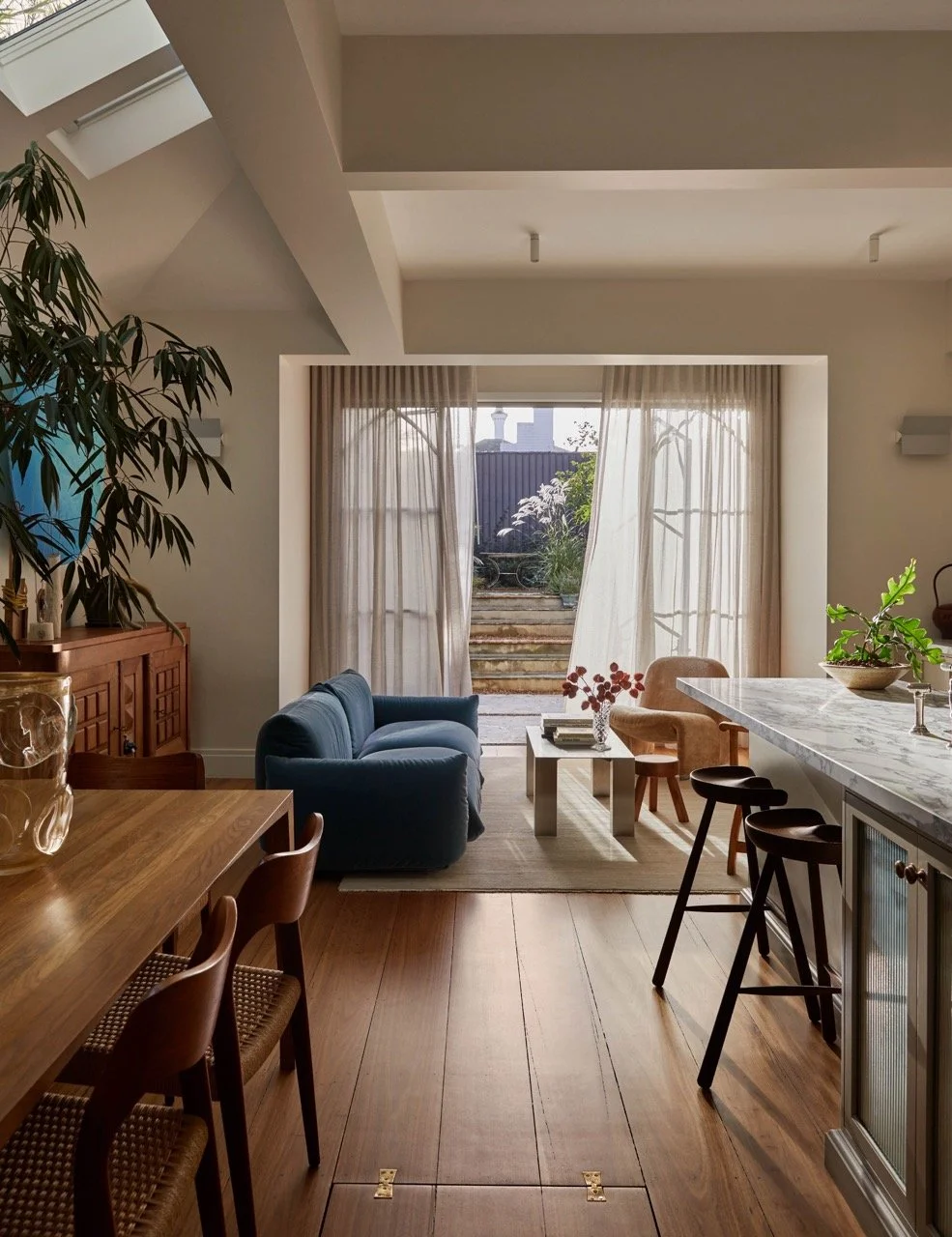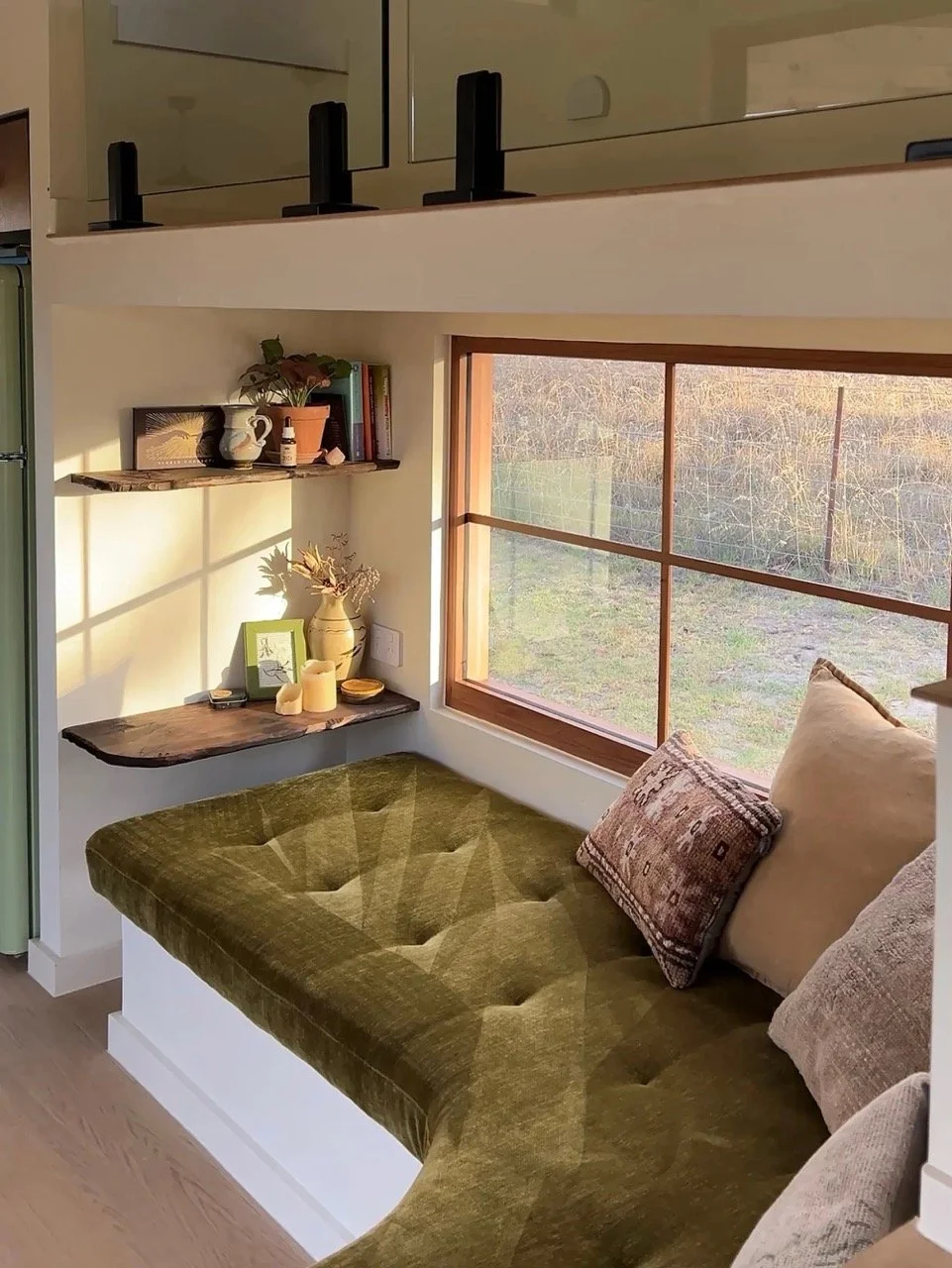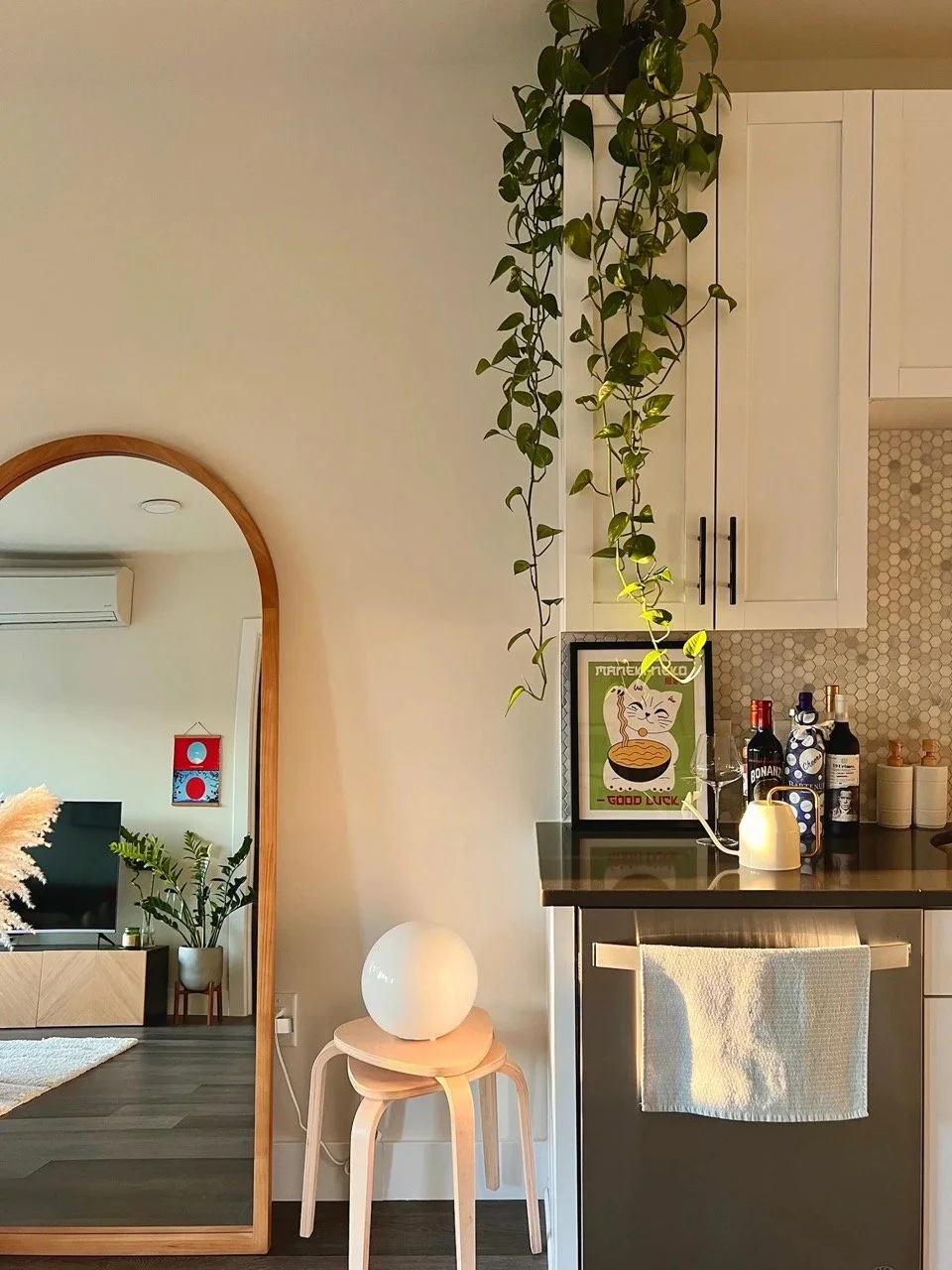How to make your home cozy
Why your home feels like a waiting room
You know that feeling when you walk into a spa and your whole body just exhales?
The lights are warm. The textures are soft. Everything feels calm without trying too hard.
Spa room in Banyan Tree Kyoto
Now imagine feeling that way every time you walk through your front door.
Most people never will.
Because they’re making the same mistake I made for years…
They’re designing their homes like offices instead of sanctuaries.
Here’s what I’ve learned about creating that cozy feeling:
First, Ditch the Big Light
Seriously. Turn it off.
The fastest way to kill the mood in a room? Flick on an overhead bulb.
Think about it…
The most inviting environments aren’t evenly lit. Sun-dappled forests. Flickering campfires. Golden hour on the beach.
They all have layers. Warm shadows. Glowy pools of light.
Start with the bulbs. Look for ones in the under 3000K range for relaxing areas (aka golden hour). Then bring in layers:
A floor lamp in one corner
A table lamp by the couch
Another table lamp by the credenza
Maybe a sconce or LED strip for good measure
👇 Watch this video if you feel like your home’s lighting isn’t quite up to scratch.
Next, reduce the plastic
We’re biologically wired to relax around natural materials. It’s called biophilia.
Ever wonder why spas and boutique hotels lean heavily on wood and linen instead of plastic and polyester?
Now you know.
You don’t need to turn your living room into a jungle. Just swap out the synthetic stuff:
That plastic vase? Try rough ceramic instead
MDF side table? Consider solid wood or veneer
Polyester curtains? Linen that moves softly with the breeze
Lillie Thompson (left) & Maddison Milton & Kyle Markham (right)
Left: Notice all the natural materials like the timber floor, timber furniture, wool rug, plants, and sheer linen curtains.
Right: Notice the rough timber shelves, velvet upholstery on the nook seating, and organic decor items on the shelves.
Then create pockets of cosiness (zones & nooks).
Open plan spaces are great until they feel like furniture showrooms.
Cosiness comes from boundaries.
Start with one zone. Reading chair + floor lamp + side table + tiny rug + throw.
That’s it. You’ve just carved a pocket of cosiness out of a big room.
Build from there. Use rugs to define zones. Pendant lights to mark dining areas. Bookshelves to separate workspaces.
Add some curves to your life.
Knives. Claws. Thorns.
What do they all evoke? Danger.
That’s why rooms full of straight lines can feel tense.
Curves feel safe.
You don’t need to overhaul everything. Just introduce a few soft shapes:
Round dining table
Arched mirror
Globe-shaped lamp
Even a tray with curved edges
Clariza Abad (left) & Brooke Mennen-Talsma (right)
Left: Notice the arched mirror and globe lamp.
Right: Notice the arched built-in shelf featuring curved pots.
Finally, texture everything.
If your home feels flat, it’s missing contrast.
Not colour contrast. Texture contrast.
Rough and smooth. Soft and hard. Woven and polished.
Try a chunky knit on a linen sofa. Velvet cushions against a jute rug. A smooth ceramic bowl beside raw wood.
These combinations create what psychologists call “soft fascination.”
It’s the same reason flickering candles and crashing waves are hypnotic. They draw you in without demanding your full attention.
This home is full of textural contrast. Designed by Amber Interiors. Photo by Tessa Neustadt
Here’s your action plan:
Light your space like golden hour (layers + warm bulbs)
Swap plastic for natural materials
Create corners and nooks
Add curves where you can
Layer in texture everywhere
Do this, and your home stops feeling like a waiting room.
It starts feeling like a retreat.
👇 Watch this video for a deeper dive into today's topic.
Cheers,
Reynard





